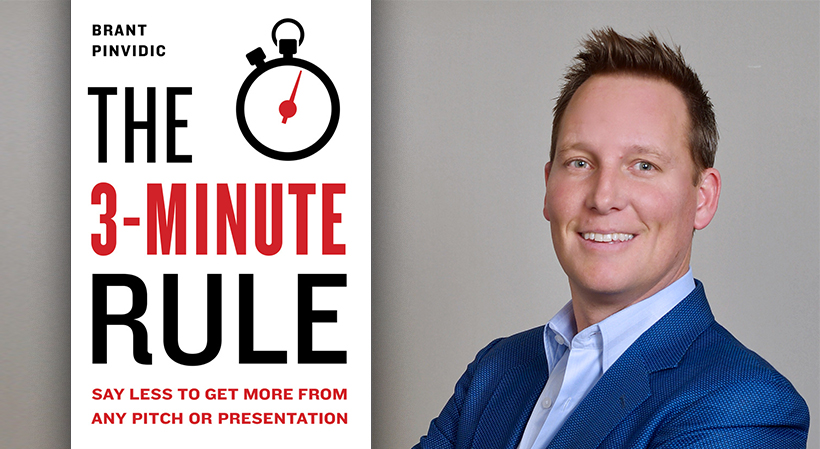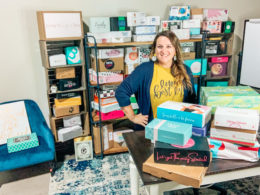The following is excerpted from “The 3-Minute Rule: Say Less to Get More from any Pitch or Presentation” by Brant Pinvidic with permission of Portfolio, an imprint of Penguin Publishing Group, a division of Penguin Random House LLC. Copyright © Brant Pinvidic, 2019.
When I’m working with someone or speaking, I always say, “Let’s identify the problem.” Without fail, everyone thinks I’m referring to the problem that their product or service is solving for the audience. And I get it. That’s been the benchmark for pitching and selling since the dawn of time. You identify a problem, and then you show how your product or service solves that problem or need.
But when I talk about identifying the problem, I’m talking about identifying the problem with your offering.
One of the first and most powerful questions I ask every new client or audience is: “What do you hope the audience doesn’t find out?”
The answers are always very telling. If people are being honest, there is something that pops to mind.
I go through this exercise because up to this point all you’ve been focusing on is the “value” and the “good.” You’ve been identifying and sorting only the strongest and most impactful information to build your story and lead your audience. When we’re in pitching or presenting mode, our minds are trained and conditioned to present the best and brightest and most optimistic and enthusiastic side.
That might have been good enough once. But today, it’s equally as important to look at the other side of the coin. As I mentioned earlier, today’s audience is overexposed to marketing and inherently skeptical. The second you start giving off the “too good to be true” vibe, their Spidey-sense starts tingling.
Just like the state-and-prove impulse causes your audience to look to disprove your statements, if your pitch or proposal is all positive and upside, your audience will look for issues and problems to balance. What’s really scary is that most of the time they’ll do that while you are presenting.
Related: Why Everything is Figureoutable Using This Simple Formula
Now, you may be one of the few people on earth who has only upside to sell, and at the end of the day it doesn’t matter if the audience is looking for issues. But is that really the strongest foundation to be presenting from?
No. Clearly. (And it’s almost never really the case).
You don’t want your audience looking for problems or issues. You don’t want their minds working against you while you explain all the benefits and potential of your fantastic idea. But if it’s all sunshine and roses, that’s what happens.
Have you ever made a presentation or pitch and the very first question is about something negative? You know, where your audience asks you the “What about X?” question the second you’re done?
The truth is, if you can get “what about” questions, you are going to get them. Think about it. If the first question someone asks is about a potential issue they need you to clarify, it means they’ve been thinking about that issue while you’ve been presenting, and probably missed the value in most of what you said. You want to avoid that.
But “what about” questions don’t have to be a bad thing. If you can identify them in advance, I’ll show you how to use them to your advantage.
First, ask yourself the questions below to help identify your “what about”:
- What do you hope your audience doesn’t start thinking?
- What conclusion would you want them to stay away from?
- What issue will they think you’ve overlooked?
- What’s the last thing you want them to ask about?
- If someone says no, what would be their best reason?
- If your competitor were here, what would they say about you?
- If this were a debate, what would the other side be saying?
You get it. Identify the problem. Your problem.
So find your moment and work the negatives into your presentation with “We were surprised to learn,” or “I still struggle with,” or “What we are trying to avoid,” or “The problem we’re working through,” or “My initial concerns were” whenever appropriate.
Sign Up: Receive the StartupNation newsletter!
It’s an easy and effective tool. Don’t be afraid to use it. Don’t be afraid to really dig in. You almost can’t go too far. If the negatives were really a deal breaker, you wouldn’t still be pursuing the idea. You must believe in the upside enough for it to outweigh the problem. So you need to trust that if you make your audience see things the way that you do, they’ll agree.
There is a clear confidence in using your weaknesses that absolutely shines through when you admit them without fear or spin. It screams to the audience that you believe in your business, product or service so deeply that the downside is not an issue and can be addressed anytime for any reason.
“The 3-Minute Rule: Say Less to Get More from any Pitch or Presentation” is available now wherever books are sold and can be purchased via StartupNation.com.






